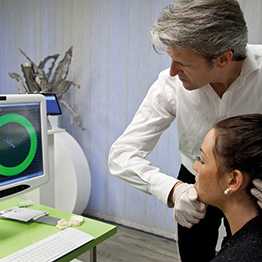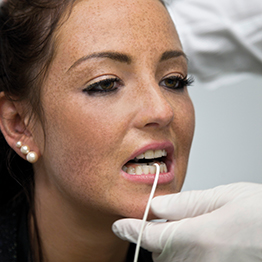Instrumental functional diagnostics:
detecting functional disorders of the jaw joints
For early detection or if they suspect a functional disorder – especially once manual-clinical diagnostics have been carried out – dental specialists receive final clarity about the unique situation of the patient’s temporomandibular system during further instrumental analysis. During this stage, the dentist also determines what the ideal centric positioning of the condyles would be for the jaw joints to function smoothly.
Lower jaw – jaw joints – condyles: are they in the right position?
Viewed medically, the ideal position of the mandible and the TMJs is the “cranioventral, laterally undisplaced position of both condyles with a physiological condylus-discus relation and physiological loading of the tissue structures involved” (source: German Society for Dentistry, Oral and Mandible Medicine and German Society for Functional Diagnostics and Functional Therapy). Only state-of-the-art technology like the DIR® System 2, which generates treatment data using the DIR® Concept, can impeccably determine whether this ideal state is present. In turn, the effectiveness of the DIR® Concept has been confirmed by comprehensive scientific research series and studies.
Precise: Dynamic Intraoral Registration (DIR®)
Instrumental functional diagnostics using the DIR® System 2 are conducted using electronic support-pin registration: in order to record the movements of the lower jaw and for encoding the bite under defined masticatory power. The physiological position of the condyles is the focus of bite positioning. Afterwards, a bad bite can be corrected by utilising the DIR® treatment concept, or if needed using a DIR® bite splint. Only after correction and when the patient is pain-free should dental treatment be continued (e.g. in the case of dental prostheses).
Related content:
Functional diagnostics
Brief examination/palpation using FunktioCheck Pro®
Instrumental DIR® diagnostics
DGFDT: German Society for Functional Diagnostics and Treatment





